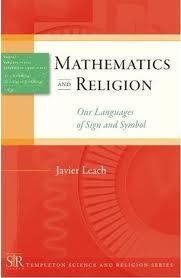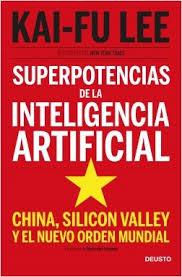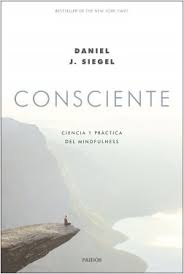
Ficha Técnica
Título: “Mathematics and Religion: Our Languages of Sign and Symbol”
Autor: Javier Leach
Editorial: Templeton Press. United States of America, 2010
Those, like me, who are interested in the field of science-religion dialogue, find in “Mathematics and Religion: Our Languages of Sign and Symbol”, by Javier Leach – a mathematician and Jesuit priest –, a precious and outstanding book, with original insights on that field. As a deep connoisseur of science, philosophy and theology, the author elaborates a very balanced, fascinating and articulated essay – free of both scientific dogmatisms and religious fundamentalisms – by taking the formal language of logic and mathematics as the threat that permits him to tie those three fields of human knowing and suggest a model of relationship between science and religion that he calls NOSYMA (Non-Symmetric Magisteria). In this model – as an alternative model to the one proposed in the 1980s by Stephen Jay Gould, called NOMA (Non-Overlapping Magisteria), science and religion cannot be separated, but are related in a complementary and non-symmetrical way. This asymmetry results from the fact that in some point of its discourse, religious knowledge needs science to significantly speak to and dialogue with our occidental culture, markedly linked to science and technology, while science may, in theory, develop itself and pursuit its goals without any reference to religion. I cannot agree more with Leach that “this asymmetry is a plus for science by making it autonomous, but is also a plus for religion by endowing religion with a more comprehensive vision” (p.131).
Considering how the human efforts to organize language, as a carrier of meaning, is central to human progress, and searching inside the three basic and complementary types of human language – formal, empirical and metaphysical-religious, used by logic and mathematics, empirical sciences and philosophy and theology, respectively, and based in different perceptions of reality – Leach discovers the unique role that the formal language of mathematics performs as a public language and as in linking science with philosophy and theology. In the past centuries, the achievements of empirical science based on natural laws, expressed by the univocal language of mathematics, led to the spread idea that formal and empirical languages could reach all the truth and the absolute certainty about the world and human life and, thus, making obsolete metaphysical language. But, the discover, in the twentieth-century, of the theorems of the incompleteness and nondecidability for some formal systems led to the conclusion that, in general, these systems must remain open and cannot make absolute statements or give absolute certainty .
Not only formal systems have this property of openness. In fact, this same property is found in real systems, described by contemporary sciences, such as quantum physics, biology and neurosciences. Since different formal systems have to be taken in account and the idea of plural certainty is acknowledged in mathematics, then it is the principle of consistency (or principle of noncontradiction) that allows the widest basis for certainty and truth in mathematics and permits choosing between different formal systems. This situation leads Leach to put in parallel formal (based on signs) and metaphysical (based on symbols) languages, claiming that “consistency is a logical principle that unites metaphysics and mathematics” (p.70), and that “with both pluralism and univocal certainty (consistency), we can conclude that mathematics and science remain open to – and often friendly to – the language and ideas of metaphysics” (p.71). Since our world is open to incompleteness, and indecidability, and mathematical and scientific rationality require, in the end, the consistency (within each of the plural systems that coexist and they do not exclude mutually one another), which cannot be proved within formal language for sufficiently complex theories, then consistency is a metaphysical presumption, that becomes a scientific value, and also a theological value. This is the lesson “that the history of mathematics offers for the modern dialogue between science and religion” (p. 92). In sum, the openness of mathematics and empirical sciences and their request of consistency is such a good news that allows us to put in dialogue formal, empirical and metaphysics-religious languages. In fact, all of them start by choosing (and putting faith in) their own assumptions and proceed building, by “deduction”, their own systems of languages, which, in the end, are open to transcend each other (p.126) in a fruitful dialogue.
I think that the interesting insights provided by this book allow believers and nonbelievers to entail a fertile dialogue and the reader gets a powerful and inspirer instrument to deep down future research in the field of science and religion. For all this, I vividly recommend this outstanding and fascinating book.
Alvaro Balsas











Hacer un comentario